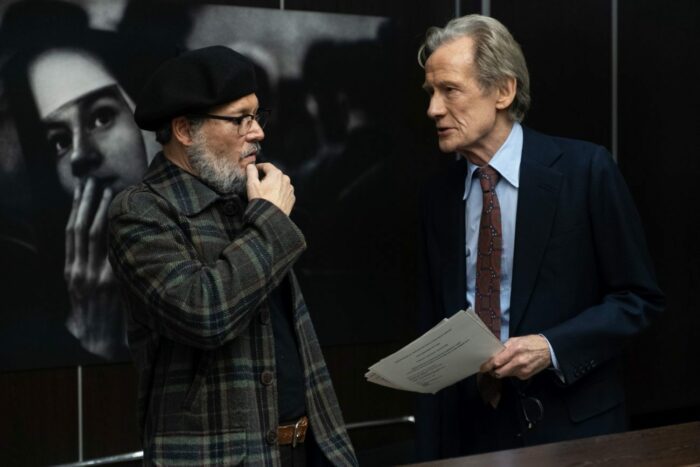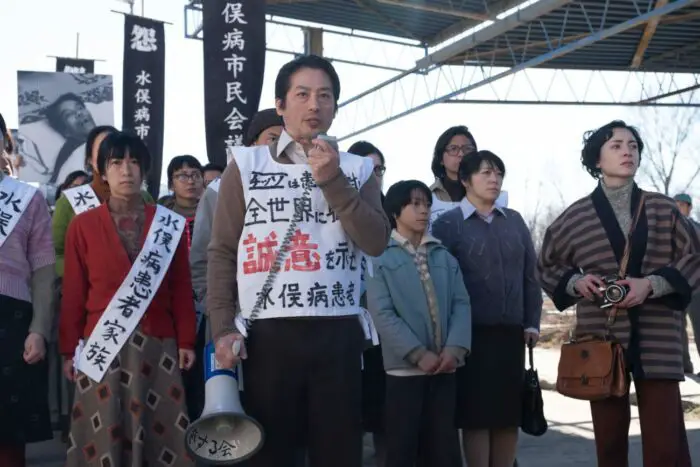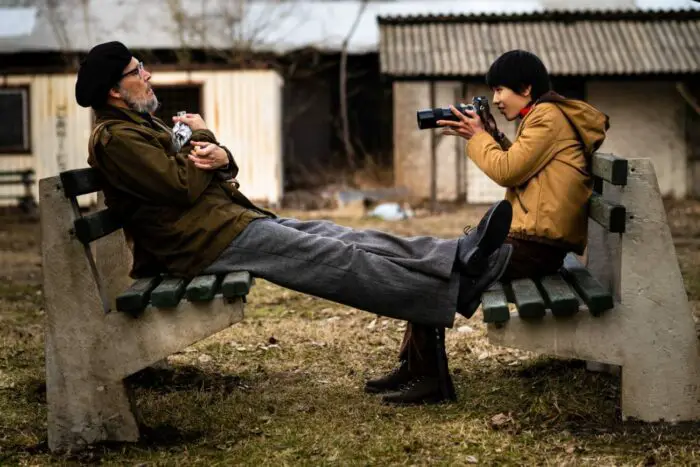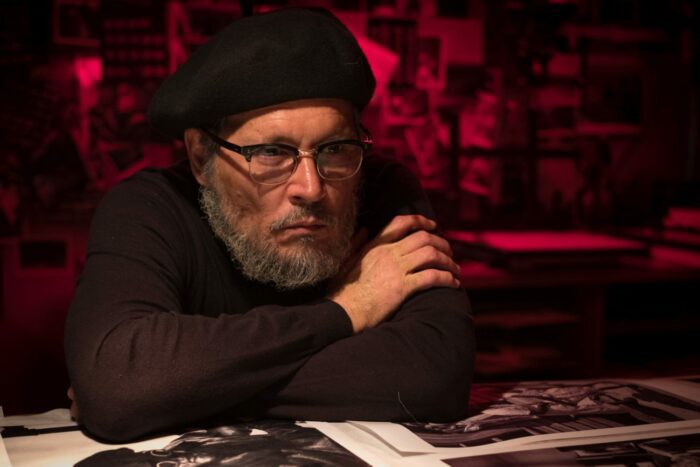A year ago in this very space within a review of The Dig, I outlined how some theatrical movies based on true stories may have been more compelling and more richly told as a documentary rather than a dramatization. Reflecting again on the swing between revealed truths and manufactured histrionics, Minamata, starring Johnny Depp falls into that very same place as The Dig. There is a solid effort with dramatic license to enhance the included facts, yet the theatrics dilute the scope and authenticity.
In 1970, American photojournalist and renowned photo essay pioneer W. Eugene Smith (Depp) was north of 50 and living alone off of his professional reputation. Irritable exchanges with Life magazine publisher Robert Hayes (an always exasperated Bill Nighy, challenging Depp without CGI tentacles this time) amid the magazine’s decline from its former place of greatness convinced Smith his career was flickering close to its conclusion of relevance. While taking the paycheck of a Fujifilm commercial, he would meet and court Japanese immigrant Aileen Sprague (Minami of Battle Royale) working as a translator. Through her connections, Smith was pitched to visit the titular fishing village in the Kumamoto Prefecture of southern Japan for a promising story of interest.

What was billed as a possible public health crisis was quickly found to be a horrific human rights violation. Smith arrives to learn of a contentious clash between the powerful Chisso Company and suppressed local citizens. For decades, the factory discharges of heavy metal-infused waste into the surrounding waters led to widespread mercury poisoning which tainted local staple seafood sources. The amplified form of this neurological disorder was one so severe with its debilitating, lethal, and generation-destroying congenital effects that it now bears the town’s name.
For the next several years, Eugene and Aileen would join the local civil resistance, often led by the stoic Mitsuo Yamazaki (the wonderfully committed Hiroyuki Sanada, most recently featured in Mortal Kombat) in gathering context and challenging the Chisso brass. As the privileged foreigner, Smith slowly lowered the hurdles of trust and acceptance by showing an invested willingness to take risks that put himself in harm’s way in support of the Minamata cause.

Minamata reminds us what Johnny Depp’s charisma can do outside of his fantasy wheelhouse and Tim Burton security blanket. Pushing through aging makeup, a potty mouth, and other curmudgeon behavior, Depp channels a unique and dour bluntness as W. Eugene Smith. True to the usual inspirational movie path, the heart of this dire story helps reduce the quirk factors and allows the actor to pleasantly play something straight and affecting. Depp’s presence as one of the film’s producers further emphasizes his complete dedication to this project.
In Smith’s line of work, the text-based components were only the skeleton of the story. His striking black-and-white photos are what gave it skin, muscle, and vivacity, even in monochromatic hues. Their intimate depth of the horrific physical afflictions and the plights of shattered families presented a damning portrait of devastation being hidden from the rest of the world. Eugene’s collection of photographs published in Life across several pieces, including the famous centerpiece Tomoko and Mother in the Bath, documented the important human toll and brought vital attention necessary for greater intervention.

Minamata gave Smith’s photography center stage treatment. Depp led scenes that demonstrated and spoke to the patience and vision required within the craft from shutter click all the way to the printed finish. French cinematographer Benoit Delhomme (The Theory of Everything) absorbed the recreated three-dimensional spaces that were present for the personal moments that became those iconic images. Famed Japanese composer Ryuichi Sakamoto (The Sheltering Sky) and vocalist Katherine Jenkins gave the proceedings a fitting somber, yet proud mood with a very lovely musical backing.

Director Andrew Levitas (Lullaby) understood that a picture was one thing and context was another. Still, when considering the sheer scope of this tragedy and oppression, Minamata barely scratched the surface of the voluminous possible details. Peripheral activity was condensed to give Depp the spotlight.
Yes, without the attention created by W. Eugene Smith’s work, this Japanese saga would not have gained the worthy attention that turned it into this movie. Casting Depp and making the most of his star involvement was a helpful gateway. However, this writer wonders if Smith could have been the supporting observer underneath someone rooted to the situation like characters played by Minami, Sanada, or his Mortal Kombat costar Tadanobu Asuno, allowing a more intimate first-hand account to lead the way. Missing such unfulfilled opportunities and others, Minamata feels like a place where a substantial documentary would have increased the justice deserved to this poignant history.



